Understanding crypto trading volume is crucial for your success in the market. Volume measures the number of units traded within a specific timeframe, reflecting market activity and sentiment. High volume often indicates an active market, while spikes can signal news-driven reactions. You'll also want to consider the dollar value of trades and unique addresses, as these reveal investor engagement. Additionally, check the order book for supply and demand insights. Balancing the advantages and risks helps simplify your trading decisions. If you stick around, you'll uncover deeper insights into effective volume analysis techniques and what they mean for your investments.
Key Takeaways
- Total volume traded indicates market activity; higher volumes suggest more active trading and potential price movements.
- Unique addresses used can reflect network adoption and user engagement in the crypto ecosystem.
- On-Balance Volume (OBV) tracks buying and selling pressure, signaling potential price trends through volume changes.
- High trading volume generally indicates better liquidity, attracting investor confidence and minimizing slippage during trades.
- Market cap and trading volume together provide insights into asset stability, investor sentiment, and potential stagnation or growth opportunities.
Volume Measurement Methods
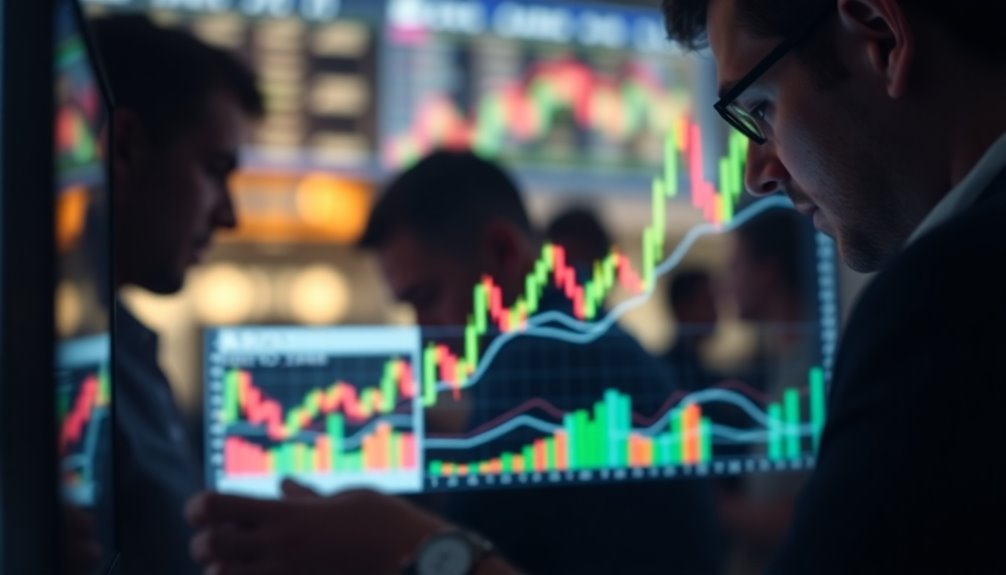
When it comes to understanding crypto trading, measurement methods play a crucial role in gauging market activity. One key method is the total volume traded, which counts the number of crypto units exchanged in a specific timeframe. High trading volume indicates a lively market, while low volume suggests quieter periods. Additionally, high trading volume correlates with increased market liquidity, facilitating efficient trade execution without significant price impact.
Another important metric is the dollar value of all trades, reflecting the monetary value of transactions and market sentiment. You should also consider the number of unique addresses used, as this shows network activity and adoption. Lastly, the percentage of total volume traded helps you compare trading activity among cryptocurrencies, highlighting the most active players in the market. Each method offers unique insights into market dynamics.
Crypto Market Activity Overview
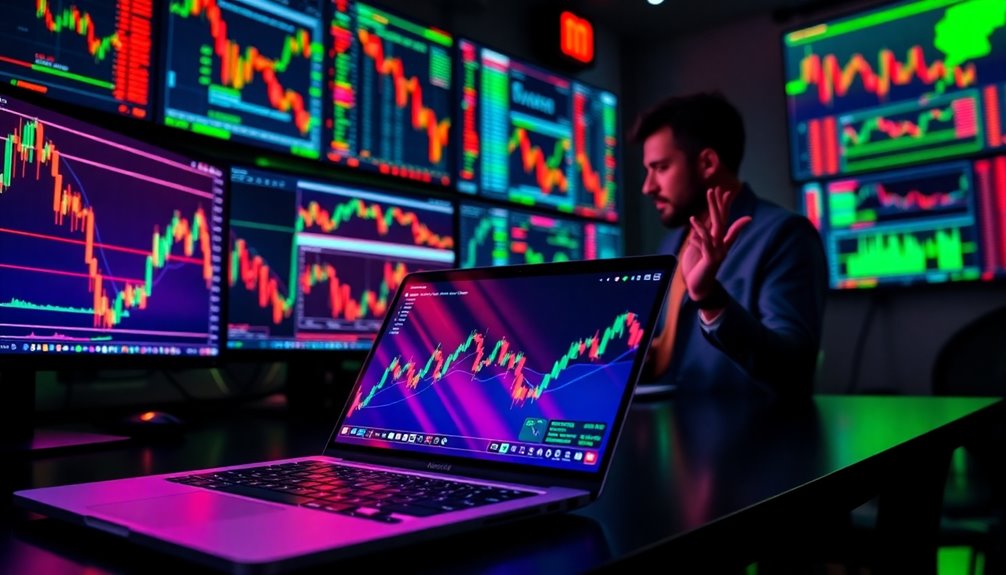
Crypto market activity is a dynamic landscape influenced by various factors that shape trading volume and investor behavior.
You'll notice that trading volume often spikes during certain days or major news events, reflecting trader sentiment. Large investors, or "crypto whales," can also sway the market significantly with their substantial transactions. Notably, Bitcoin led annual transaction volume in 2018 with $1.3 trillion in transactions, underscoring its dominance in the crypto space. By keeping an eye on blockchain data, you can track these large capital movements. Consider the time frame of your analysis; daily volume reveals short-term trends, while weekly or monthly figures provide a clearer long-term picture. Additionally, market volatility can greatly influence trading dynamics and investor decision-making.
Positive catalysts, like major political events, can further drive trading volume, making it essential to stay informed about both market conditions and investor psychology.
Order Book Dynamics Explained
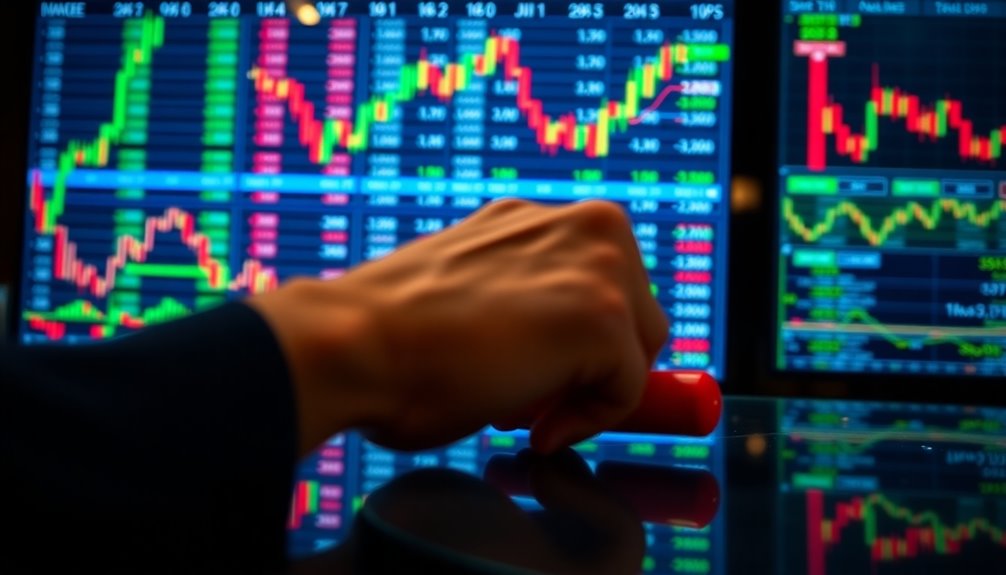
Understanding order book dynamics is crucial for navigating the crypto trading landscape effectively. The order book displays the bid side, showing buy orders sorted by price, and the ask side, listing sell orders. Each order reveals price levels and quantities, reflecting supply and demand. You'll notice the spread, which is the difference between the highest bid and lowest ask, indicating liquidity. An imbalance between buy and sell orders can signal market sentiment. New orders match against the best available limit orders, while market orders execute immediately. Understanding market orders is essential as they provide immediate execution at current prices, enhancing trading efficiency.
Pros and Cons

While assessing trading volume can provide valuable insights, it’s essential to weigh both its advantages and disadvantages. For instance, high trading volume can indicate strong market interest and liquidity, which often leads to more accurate price movements. However, it can also signal excessive speculation or manipulation, particularly during volatile periods. To better understand the implications of trading volume in specific strategies, it’s helpful to have concepts like ‘carry trade basics explained,’ as they illustrate how volume influences the effectiveness of such trades.
On the upside, high trading volume ensures better liquidity, minimizing slippage, and enhancing market activity. It reflects investor sentiment, signaling market trends and confirming price strength. Furthermore, high trading volume can indicate significant purchases by large investors, suggesting potential price increases that might attract further interest.
However, large investors can distort this data, inflating volume temporarily without indicating genuine market interest. Additionally, wash trading can create false impressions, misleading you into thinking an asset is more active than it really is.
This deceptive practice can mislead new customers and complicate your trading decisions. Balancing these pros and cons helps you make more informed choices when analyzing crypto trading volume.
Market Cap vs. Trading Volume

Analyzing trading volume alongside market capitalization is key to making informed investment decisions.
When you see a high market cap paired with high trading volume, like Bitcoin or Ethereum, it indicates stability and strong liquidity. This combination often reflects investor confidence and makes these assets suitable for swing or long-term trading strategies. Additionally, high volume often signifies active buying and selling, which enhances liquidity and ease of transactions.
Conversely, a high market cap with low trading volume may signal stagnation, suggesting limited short-term interest.
Low market cap coins with high trading volume can be enticing due to liquidity but come with increased volatility and risk.
Finally, low market cap and low trading volume indicate poor investor sentiment, making these coins less attractive and highly risky for your investments.
Always consider these factors before diving in.
Market Volatility Concerns
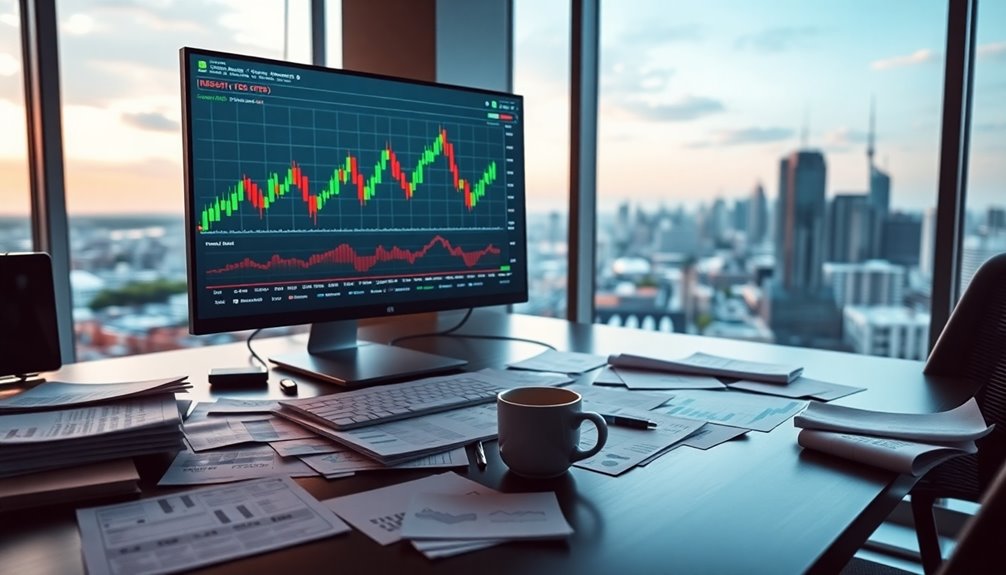
Market volatility can significantly impact your trading experience, especially in the unpredictable world of cryptocurrencies. Several factors contribute to this volatility.
The ongoing price discovery process means new participants continually adjust their valuations, leading to fluctuating prices. Additionally, the unique supply dynamics of digital assets, like Bitcoin's capped supply, can result in drastic price changes when demand spikes. This is particularly evident in the crypto market's characteristic of high volatility, where larger, frequent price movements can lead to substantial risks and opportunities for investors. Furthermore, the potential for increased trading activity and volatility during price surges can create market dynamics that are difficult to predict.
Large transactions from whales can distort the market, causing temporary spikes in volume and instability. Regulatory uncertainty further complicates matters, leaving investors in a state of apprehension.
Understanding these factors can help you navigate the volatile landscape more effectively, allowing you to make informed decisions and potentially capitalize on market swings.
Emerging Defi Trading Platforms

As the cryptocurrency landscape evolves, emerging DeFi trading platforms are reshaping how you engage with digital assets. These platforms operate on blockchain technology, cutting out intermediaries and enhancing your control over transactions.
Smart contracts automate processes like lending, borrowing, and trading, boosting both efficiency and security. You can participate in liquidity pools, enabling decentralized trading and yield farming by depositing your tokens into smart contracts.
Platforms like Uniswap and Aave lead the charge, offering direct token trading and interest-earning opportunities. Total value locked in DeFi has surpassed $100 billion in 2023, reflecting the growing interest in these platforms.
With community oversight and partnerships with traditional finance, DeFi platforms promote transparency and broaden their appeal. As you explore these options, you'll find innovative solutions that cater to your diverse financial needs while embracing the decentralized ethos of cryptocurrency.
Volume Analysis Techniques
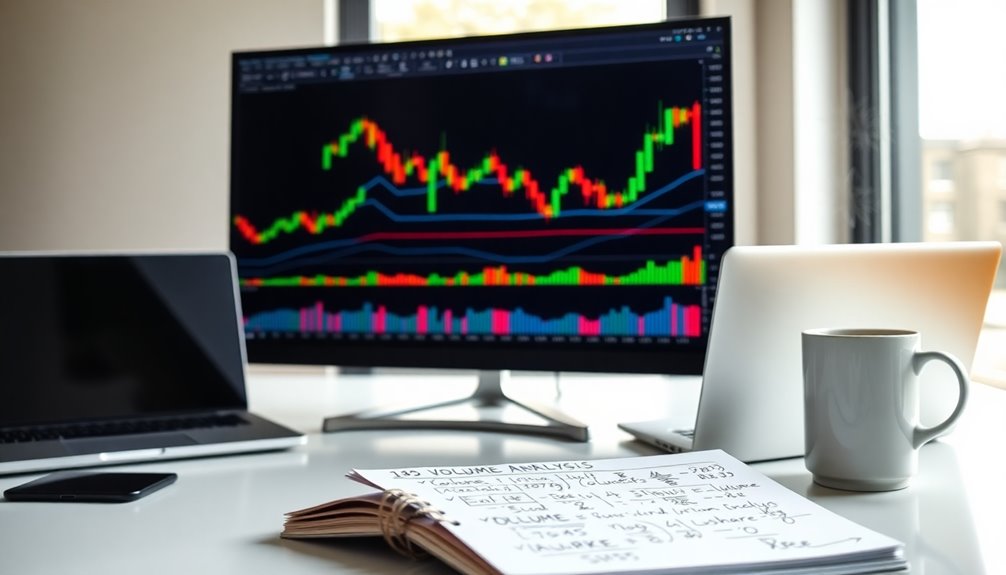
Understanding volume analysis techniques is crucial for making informed trading decisions in the cryptocurrency market.
One key method is On-Balance Volume (OBV) analysis, which tracks cumulative buying and selling pressure, helping you anticipate price movements. High volume reflects strong interest and potential price movement, making it an essential factor to consider alongside OBV.
Volume Profile analysis reveals significant price levels by displaying trading activity over time, aiding in identifying support and resistance zones.
On-Chain Volume Analysis focuses on blockchain transaction metrics, indicating network health and user activity.
Lastly, technical volume indicators, like the Volume Oscillator, help you spot divergences between price and volume, signaling potential trends.
Frequently Asked Questions
How Does Trading Volume Impact Cryptocurrency Price Movements?
Trading volume plays a crucial role in cryptocurrency price movements.
When you see high trading volume, it often signals strong market interest and liquidity, making it easier for you to buy or sell without drastic price changes.
If prices rise alongside increasing volume, it typically indicates bullish momentum.
Conversely, falling prices with declining volume might suggest a reversal.
Keeping an eye on volume can help you gauge market sentiment and potential price trends.
What Is the Significance of Volume in Market Trends?
The significance of volume in market trends can't be overstated. High trading volume indicates liquidity, making it easier for you to buy or sell assets without drastic price changes.
It also reflects market sentiment; when you see high volume during price increases, it often suggests bullish momentum.
Moreover, volume helps confirm price trends, allowing you to make more informed decisions about entering or exiting positions in the market.
Can Low Trading Volume Indicate a Lack of Interest?
Low trading volume often indicates a lack of interest, leading to liquidity limitations and lingering price instability.
When you see those numbers dip, you might notice fewer traders engaging, creating a cautious climate.
This uncertainty can spark volatility, making price predictions perilous.
If you're eyeing an asset with low volume, tread carefully; it could signal a stagnant market or even manipulation by larger players, leaving you vulnerable to unexpected shifts.
How Do Institutional Traders Influence Crypto Trading Volume?
Institutional traders significantly influence crypto trading volume by executing large transactions that can sway market dynamics.
You'll notice that their trading activity often surpasses that of retail investors, leading to increased liquidity and price stability.
They exploit market inefficiencies, driving trends and contributing to overall volatility.
What Role Do Exchanges Play in Measuring Trading Volume?
Imagine navigating a bustling marketplace; exchanges are the vibrant stalls where trading volume comes to life.
They play a crucial role in measuring how much crypto is changing hands. By aggregating data from countless transactions, exchanges provide insights into market health and liquidity.
You'll notice that a popular exchange often showcases higher volumes, reflecting investor interest and confidence, while lower volumes can signal caution or uncertainty among traders in this digital bazaar.
Conclusion
In the ever-evolving world of crypto trading, understanding volume is key to making informed decisions. Did you know that in 2023, Bitcoin alone accounted for over 40% of the total crypto trading volume? This highlights its dominance and influence on market trends. By grasping volume measurement methods and the dynamics of order books, you can navigate the market more effectively. Stay alert to emerging platforms and volatility, and you'll be better equipped to seize opportunities in this dynamic landscape.









